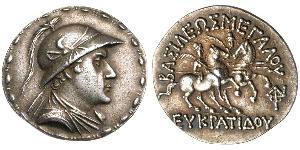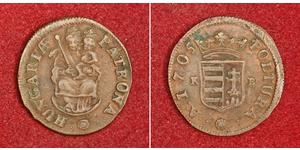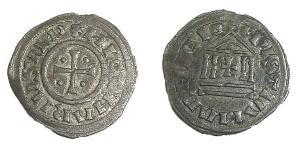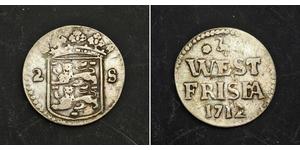[ 3397] Aurelian - Roman Emperor: 270-275 A.D. - Bronze Denarius (19mm, 1.92 gm.) Siscia mint: 270-275 A.D. Reference: RIC 73, C275. IMPAVRELIANVSAVG - Laureate, cuirassed bust right. VICTORIAAVG Exe: A - Victory advancing left, holding wreath and palm; seated captive to left. Provided with certificate of authenticity. CERTIFIED AUTHENTIC by Sergey Nechayev, PhD - Numismatic Expert In Roman mythology, Victoria was the personification/Goddess of victory. She is the Roman version of the Greek goddess Nike, and was associated with Bellona. She was adapted from the Sabine agricultural goddess Vacuna and had a temple on the Palatine Hill. Her name (in Latin) means victory. Unlike the Greek Nike, Victoria (Latin for "victory") was a major part of Roman society. Multiple temples were erected in her honour. When her statue was removed in 382 AD by emperor Gratianus there was much anger in Rome. She was normally worshipped by triumphant generals returning from war. Also unlike the Greek Nike, who was known for success in athletic games such as chariot races, Victoria was a symbol of victory over death and determined who would be successful during war. Appearing on Roman coins, jewelry, architecture, and other arts, Victoria is often seen with or in a chariot. An example of this is her place upon the Brandenburg Gate in Berlin, Germany. Lucius Domitius Aurelianus (September 9, 214 or 215 –September or October 275), known in English as Aurelian, Roman Emperorr (270–275), was the second of several highly successful "soldier-emperors" who helped the Roman Empire regain its power during the latter part of the third century and the beginning of the fourth. During his reign, the Empire was reunited in its entirety, following fifteen years of rebellion, the loss of two-thirds of its territory to break-away empires (the Palmyrene Empire in the east and the Gallic Empire in the west) and devastating barbarian invasions. His successes started the end of the empire's Crisis of the Third Century. Rise to power Aurelian was born in Dacia ripensis or Sirmium (now Sremska Mitrovica, Serbia), to an obscure provincial family; his father was tenant to a senator named Aurelius, who gave his name to the family Aurelian served as a general in several wars, and his success ultimately made him the right-hand man and dux equitum (cavalry commander) of the army of Emperor Gallienus. In 268, his cavalry routed the powerful cavalry force of the Goths at the Battle of Naissus and broke the back of the most fearsome invasion of Roman territory since Hannibal. According to one source, Aurelian participated in the assassination of Gallienus (268), and supported Claudius II for the purple.Two years later, when Claudius died his brother Quintillus seized power with support of the Senate. With an act typical of the Crisis of the Third Century, the army refused to recognize the new emperor, preferring to support one of its own commanders: Aurelian was proclaimed emperor in September 270 by the legions in Sirmium. Aurelian defeated Quintillus' troops, and was recognized emperor by the Senate after Quintillus' death. The claim that Aurelian was chosen by Claudius on his death bed can be dismissed as propaganda; later, probably in 272, Aurelian put his own dies imperii the day of Claudius' death, thus implicitly considering Quintillus a usurper.With his base of power secure, he now turned his attention to Rome's greatest problems — recovering the vast territories lost over the previous two decades, and reforming the res publica. Conqueror and reformer In 248, Emperor Philipp had celebrated the millennium of the city of Rome with great and expensive ceremonies and games, and the empire had given a tremendous proof of self-confidence. In the following years, however, the empire had to face a huge pressure from external enemies, while, at the same time, dangerous civil wars threatened the empire from within, with a large number of usurp ...
type to read more

|
Posted by:
anonymous 2015-08-19 |
Similar Coin Groups
2025-05-24
- New coin is added to 2 Stuiver Netherlands Silver
2 Stuiver Netherlands Silver
group has 2 coins / 2 prices
⇑
1712, Netherlands, West Friesland. Silver 2 Stuivers (Double Wappenstuiver) Coin. Condition: VF+ Mint Year: 1712 Province: Holland Reference: KM-106.1. Denomination: 2 Stuivers (Doub ...
2025-05-29
- Historical Coin Prices
You may be interested in ...






















